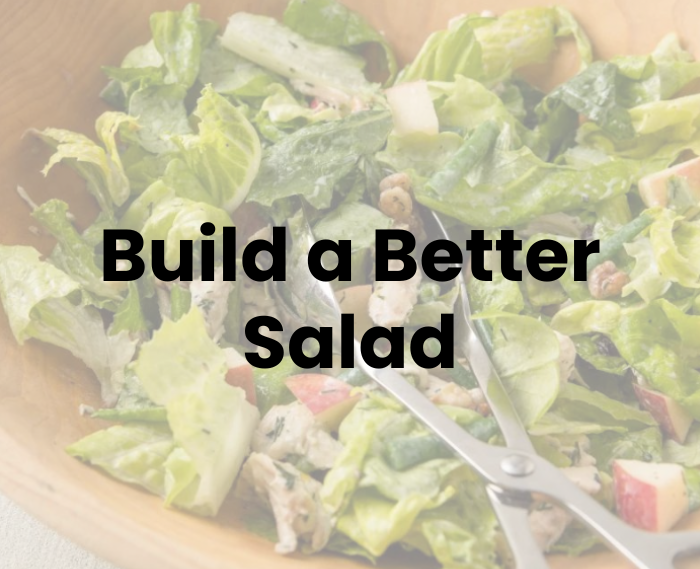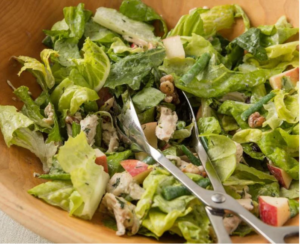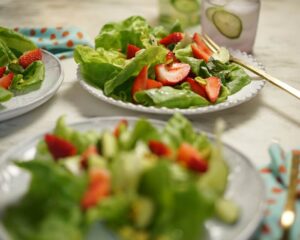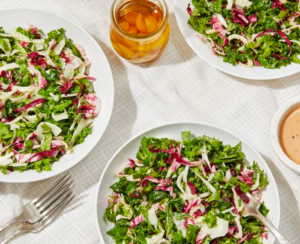Use the Freshest Produce
Using the absolute freshest and most perfectly ripe, seasonal produce will mean the difference between an OK salad and a really great one. Rather than go to the store stuck on a particular type of salad to make, buy what looks best and go from there. If only one or two items at the market look really great, stick to those. It’s best to keep it simple and use really high quality ingredients than have a half-dozen mediocre items in your salad.
Green Salad With Chicken, Apple and Maple Walnuts in Buttermilk Dressing
Wash and Dry Well
Rinse vegetables and fruit under running water, rubbing gently with your hands or using a vegetable brush, and then pat dry.
If you purchase lettuce already washed and packaged, you don’t need to wash it again. If you are buying unwashed greens, soak them 2-3 times in a large pot or salad spinner, lifting so any grit can fall to the bottom. Then spin or pat dry- really dry. Wet lettuce means a watery dressing that won’t stick well to the leaves.
Nectarine and Fennel Salad with Crispy Prosciutto
Toss It
Glopping dressing on top is no way to treat a great salad. Always toss with the dressing so it coats the leaves evenly. Start with a little and add more as needed— you can always put more in but you can’t take it away.
Tender greens should be tossed gently so as not to bruise them, while heartier leaves like kale and cabbage benefit from a more rigorous toss, or even a light massage with your hands.
Tender Green Salad with Strawberries, Cucumber and Basil
Time It
Enjoy salads with tender greens right after dressing them, as they quickly loose their crisp freshness and wilt. Heartier salads and slaws benefit from settling for a little while, but be sure to refrigerate them if you plan to serve them after more than two hours. When using fresh fruit, cut and add right before serving so it doesn’t brown or become mushy.
Shredded Kale Tri-Color Salad With Creamy Garlic Vinaigrette







